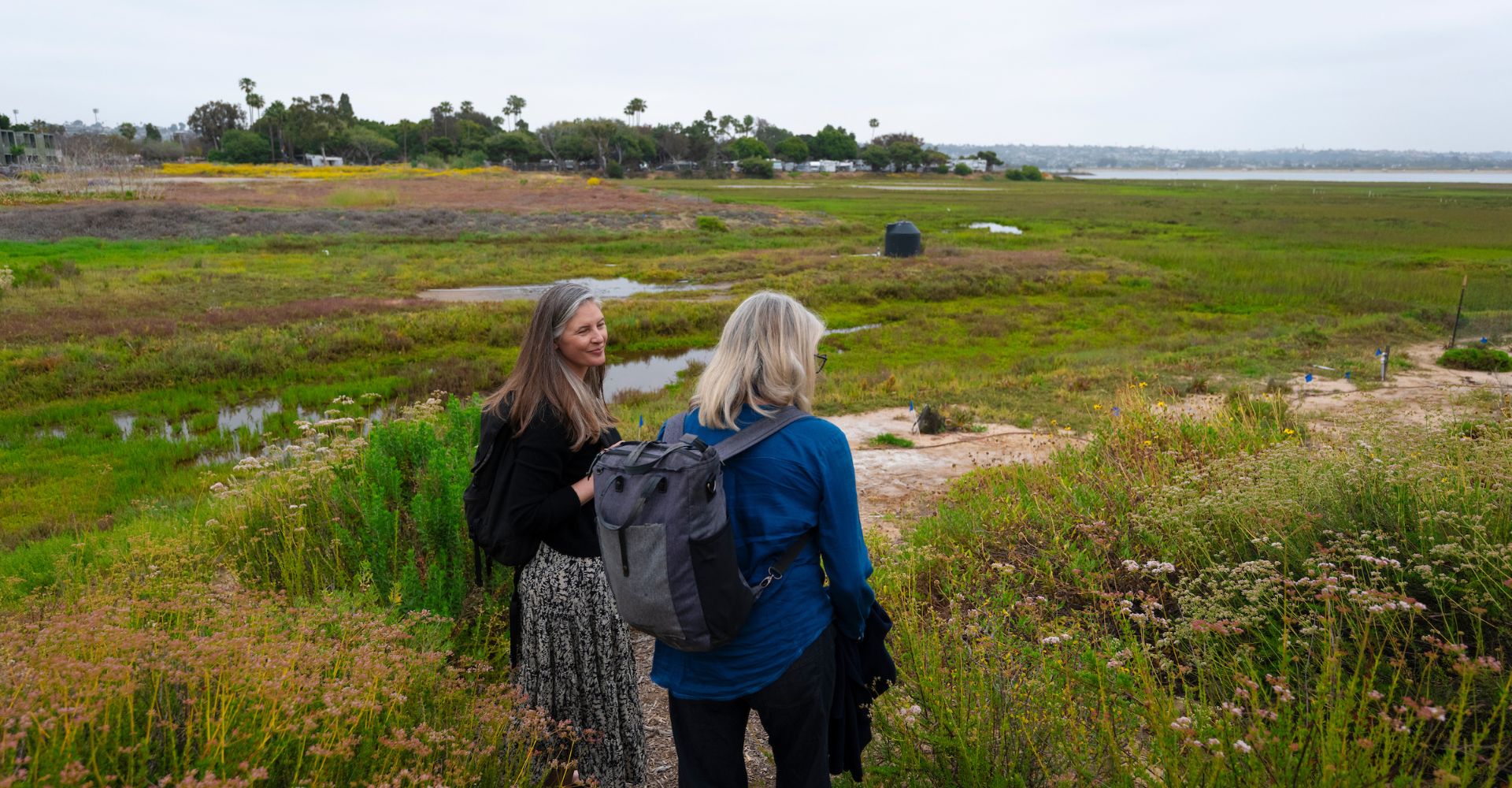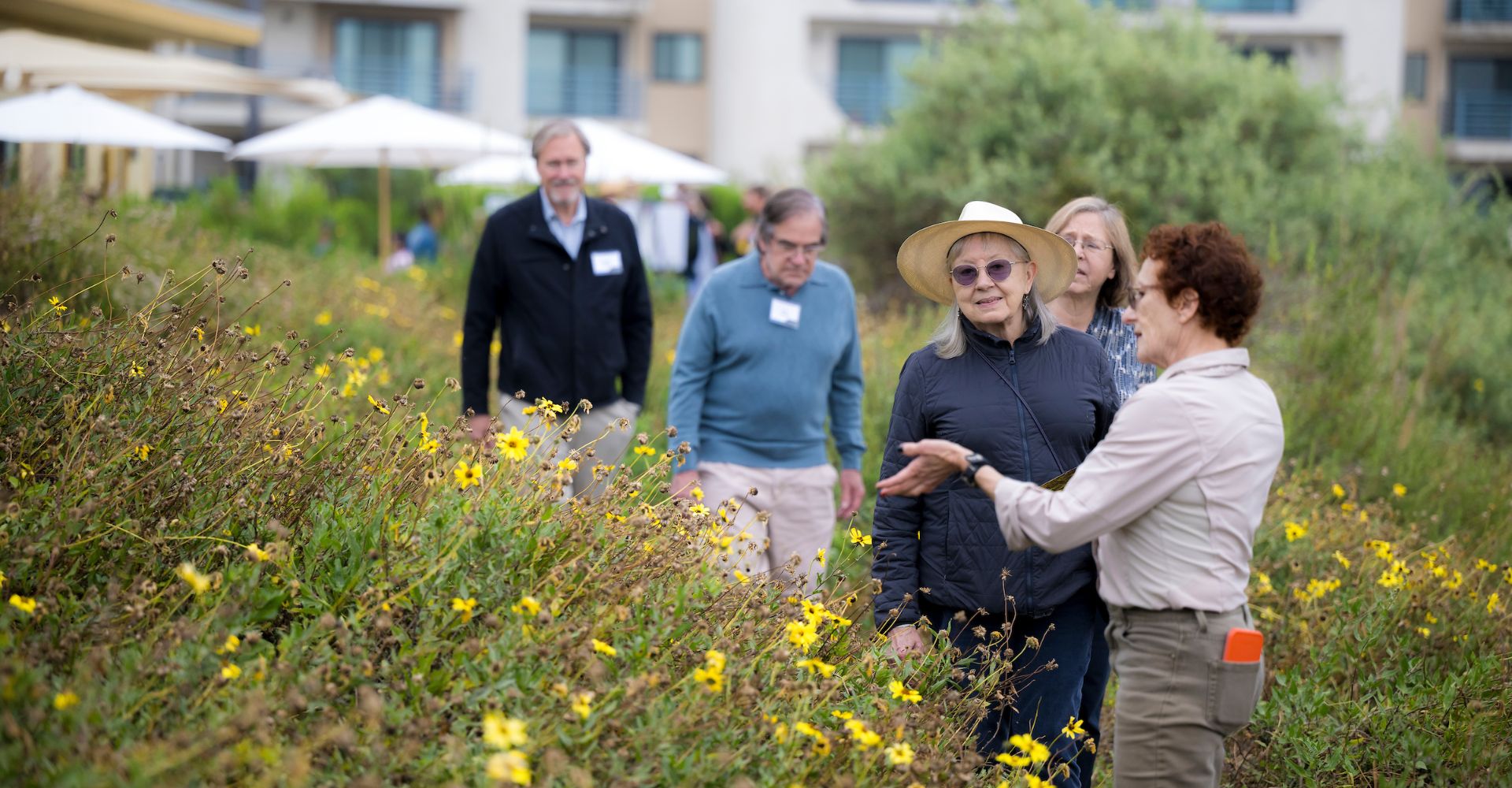UC San Diego Unveils Kendall-Frost Marsh Reserve Field Station and Community Learning Center
Story by:
Published Date
Article Content
UC San Diego celebrated a significant milestone with the opening of its new Kendall-Frost Marsh Reserve Field Station and Community Learning Center. The facility, located at the heart of the marsh, represents a major step forward in the university's commitment to environmental research, education, and community engagement.
It will include two bedrooms for researchers conducting multi-day, overnight research projects and community teaching spaces to engage with community members, school groups and university classes. The space also provides opportunities for nonprofit and educational groups to host presentations at the reserve
Vice Chancellor for Research and Innovation, Corinne Peek-Asa, highlighted the diverse roles the marsh has played, not just in scientific research but also in inspiring policymakers, artists, and community researchers.
"Kendall-Frost Marsh has inspired both policymakers and artists as well as community participatory research enthusiasts who come here to educate themselves and use that knowledge to educate others about the importance of habitat protection," she said. "From the study of birdsong, microorganisms, and habitat restoration to understanding sea-level rise, this ecosystem has contributed significantly to global wetland conservation efforts."
Peek-Asa emphasized the marsh's impact on academic research, noting that over 40 dissertations and more than 100 published research findings have originated from studies conducted at the San Diego reserves. These findings have been instrumental in shaping policies and decisions regarding wetlands far beyond San Diego.
Kendall-Frost Marsh has inspired both policymakers and artists as well as community participatory research enthusiasts who come here to educate themselves and use that knowledge to educate others about the importance of habitat protection.

The Kendall-Frost Marsh, a vital habitat for declining estuarine species, serves multiple critical functions. It mitigates the effects of climate change, protects coastal regions from storm surges, cleans the region’s water, provides a nursery for fish, and offers a habitat for endangered birds.
"We need outdoor laboratories like this one as much as we need genetics and physics labs," Peek-Asa stated. "Students come face-to-face with how nature works in a way that cannot be simulated."
The marsh is also notable for embracing a historic link between the next generation of science and the traditions of native Kumeyaay populations that originally inhabited the San Diego region.
The reserve is part of the larger University of California Natural Reserve System (NRS), which includes more than 47,000 acres of diverse habitats across the state. UC San Diego manages four reserves: Kendall-Frost Marsh, Scripps Coastal Reserve, Dawson Los Monos Reserve, and Elliott Chaparral Reserve. Each reserve contributes uniquely to the study and preservation of California's natural environments.
The new Community Learning Center and Field Station aims to make the reserve more accessible to the public and enhance its role as a community-facing resource.
Peek-Asa expressed gratitude to the many partners and donors who made the project possible, including the City of San Diego, the UC San Diego School of Biological Sciences, and numerous community organizations like the San Diego Audubon Society and Mission Bay Park.
San Diego City Council President Pro Tem Joe LaCava, a key advocate for the reserve, also spoke at the event. He highlighted the importance of the marsh in understanding and responding to climate change impacts.
"The opening of this Learning Center and field station could not have been better timed," LaCava said. "We need science to drive us. We need metrics and data to guide our policies and priorities."
LaCava underscored the city's commitment to rewilding Anza Cove and transforming Mission Bay to support new wetlands and uplands, emphasizing the collaboration between the city, UC San Diego and community groups in these efforts
The opening of this Learning Center and field station could not have been better timed. We need science to drive us. We need metrics and data to guide our policies and priorities.

Dean Kit Pogliano of the School of Biological Sciences was also instrumental in the project's success. Her leadership contributed to raising over $1.7 million for the new facilities.
"Kendall-Frost Marsh Reserve is a remarkable illustration of what can happen when UC campuses and community partners collaborate deeply and meaningfully," Pogliano said. "This new Learning Center will provide a platform for critical research and community engagement, providing opportunities to train the next generation of leaders and inspire bold action to protect this unique ecosystem."
Edie Munk, a passionate advocate for the wetlands and biodiversity, also spoke, expressing her joy and gratitude for the new facility.
Munk’s great-grandmother, Lena Kendall, once had a home overlooking the marsh. In 1952, she and the A.H. Frost estate donated what became the Kendall-Frost Marsh, a combined habitat of 20 acres, to the university system. Munk also acknowledged and celebrated her friend and longtime university supporter Julia Brown.
"The Kendall-Frost Marsh is small, but UC San Diego has made her mighty," Munk said, reflecting on the historical and future significance of the marsh area donated to the university in part by her family.
The new Field Station and Community Learning Center will enhance UC San Diego’s ability to conduct vital research, educate the community, and foster a deeper understanding of our natural environment.
The Kendall-Frost Marsh is small, but UC San Diego has made her mighty.
Share This:
You May Also Like
Stay in the Know
Keep up with all the latest from UC San Diego. Subscribe to the newsletter today.






















